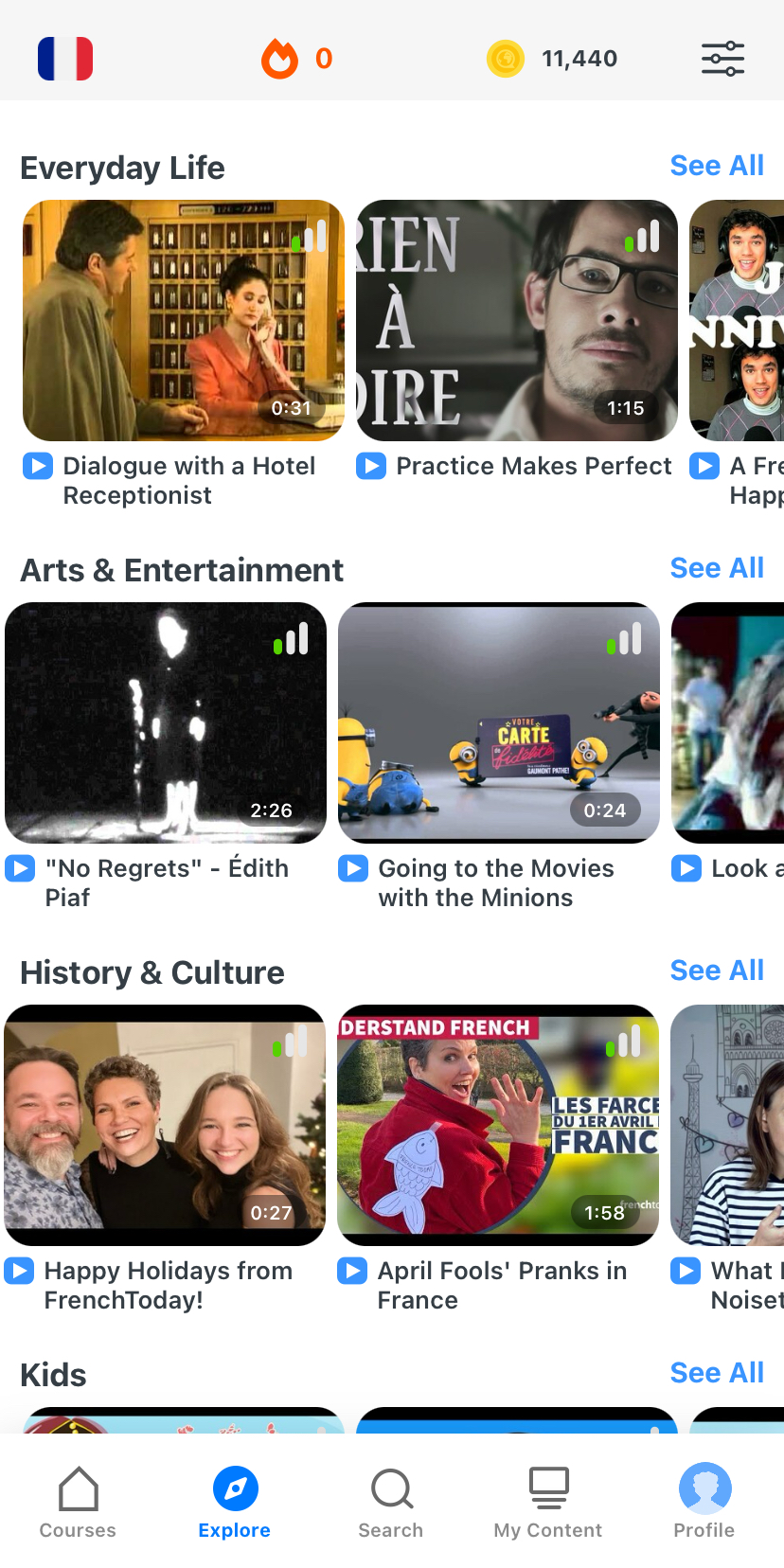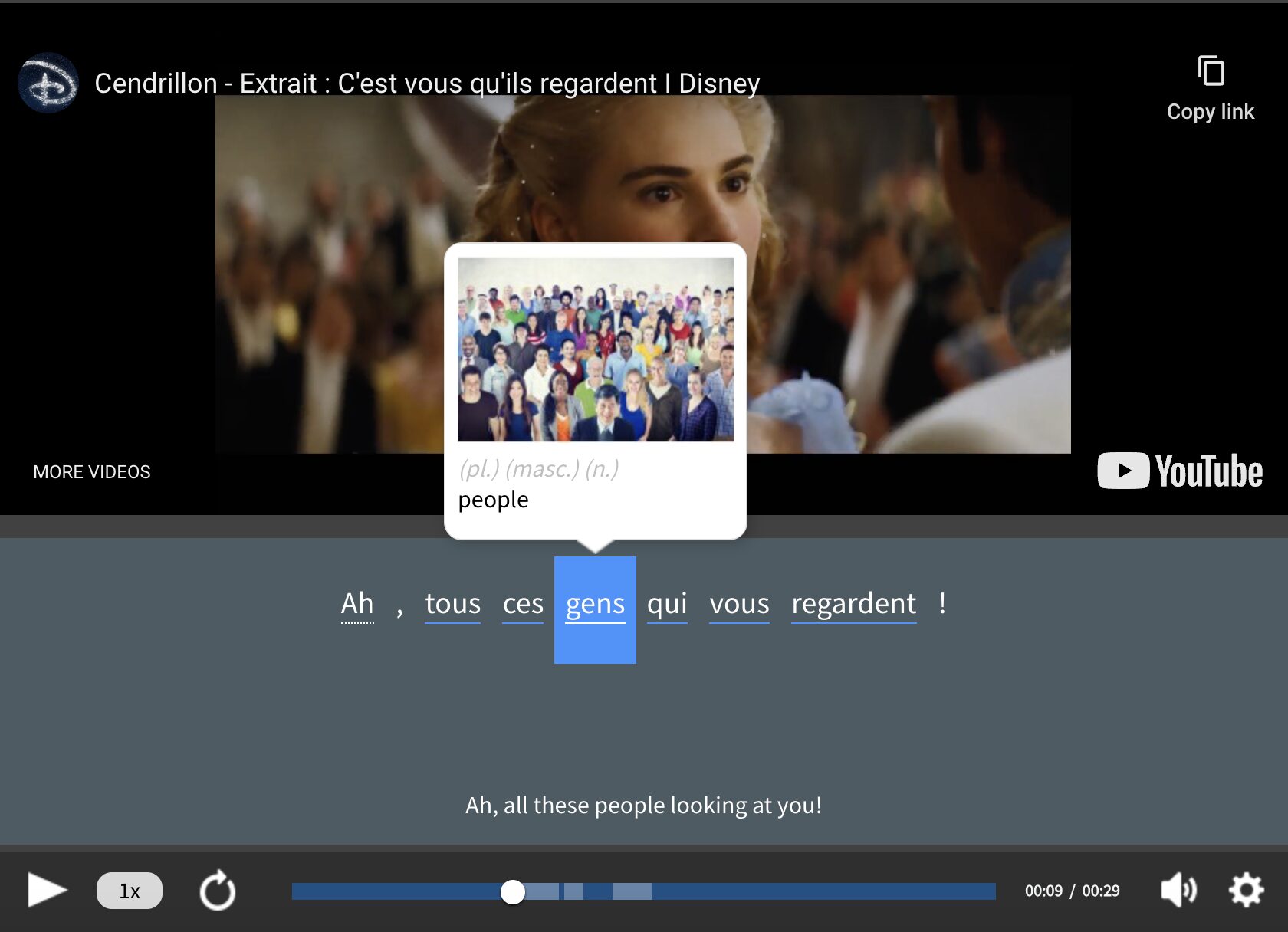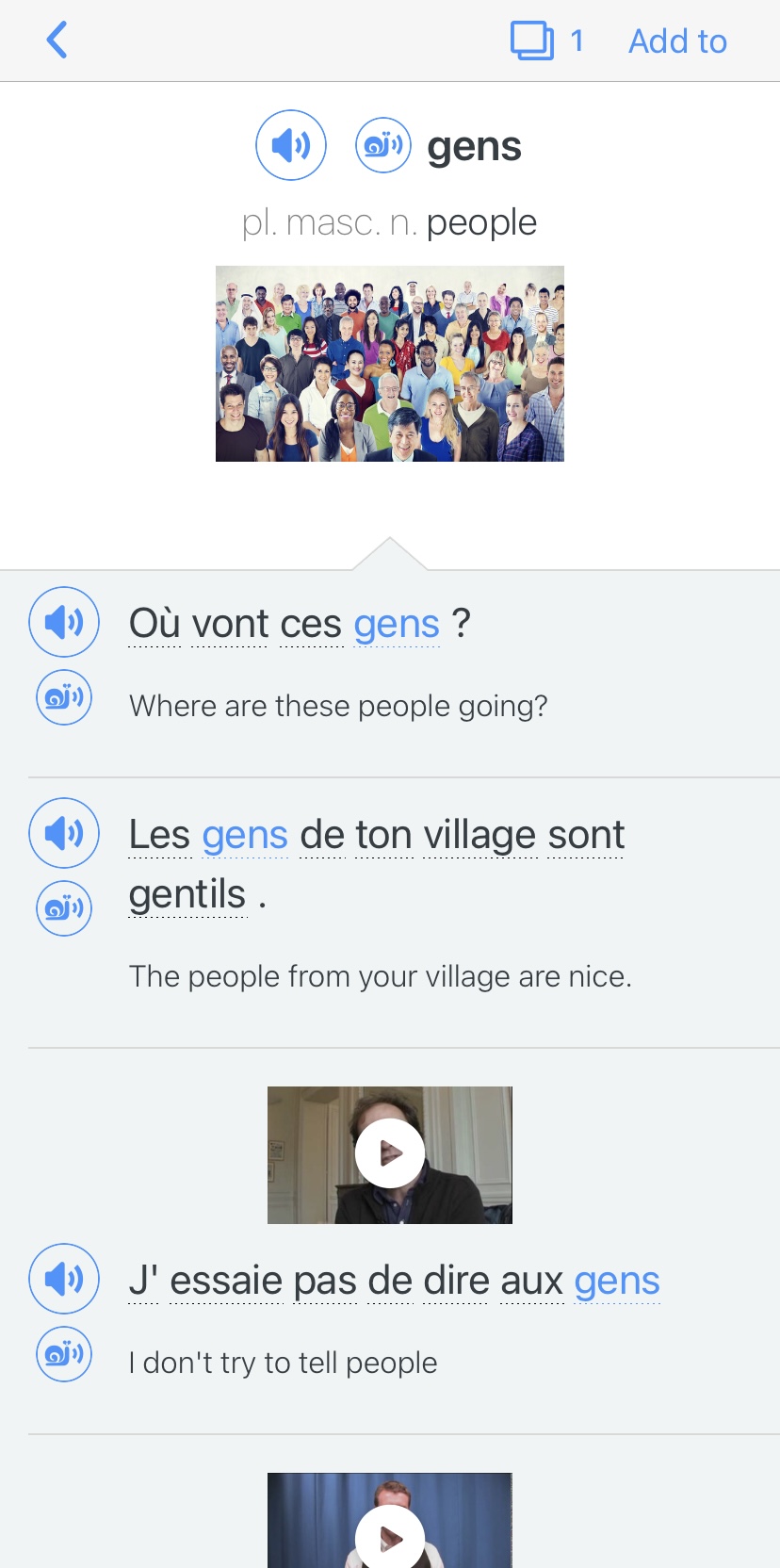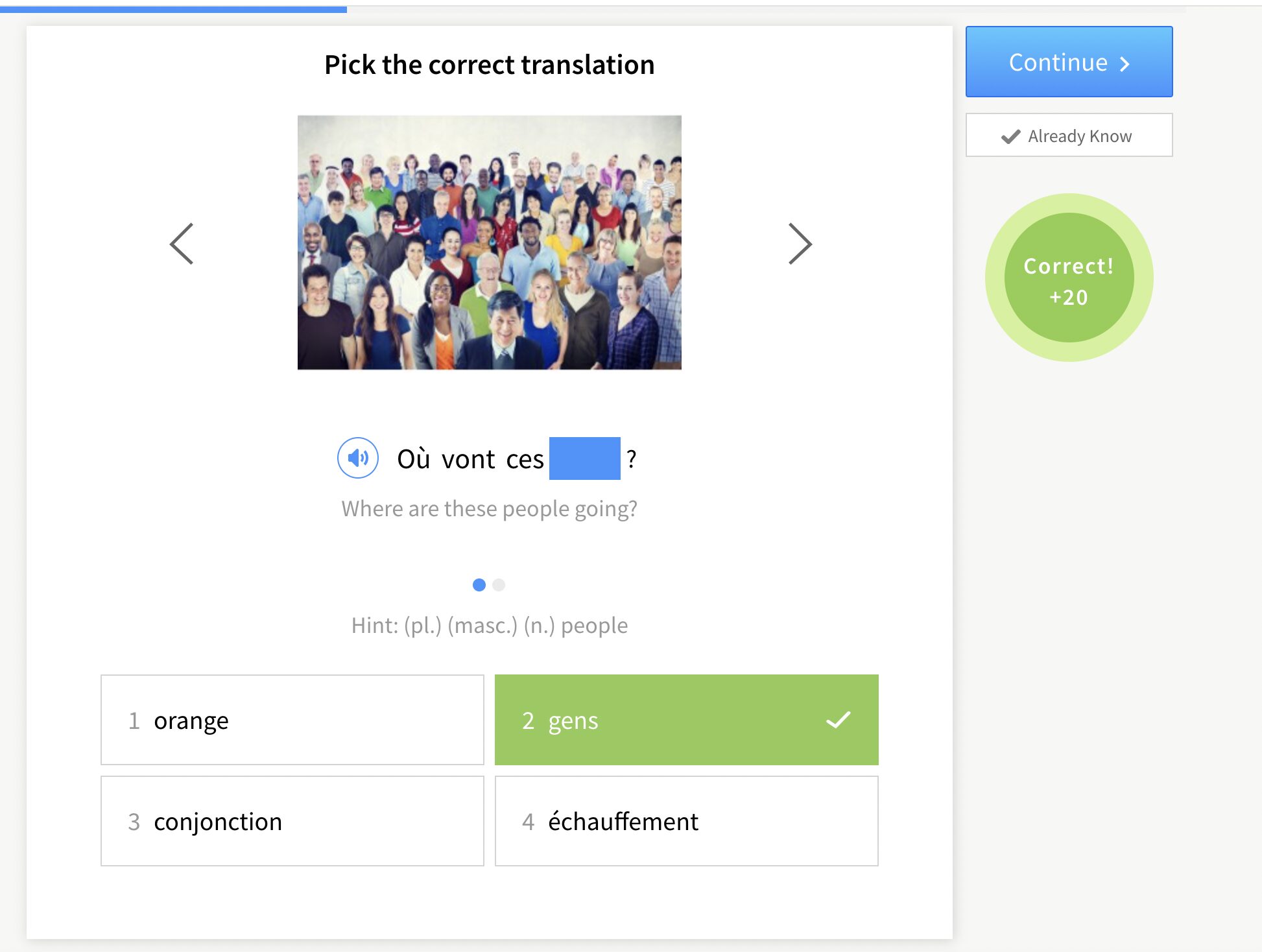Is French Hard to Learn? Plus 11 Ways to Make it Easier

The idea of learning a new language can be intimidating. However, learning French probably isn’t as hard as you think. In fact, the Foreign Service Institute lists French as one of the easiest languages for English speakers to learn.
French and English share an alphabet, grammar concepts and origins for many words. So, let’s look at some common challenges that come with learning French and how to approach them so they’re not so hard after all.
Download: This blog post is available as a convenient and portable PDF that you can take anywhere. Click here to get a copy. (Download)
1. French Pronunciation
French spelling and pronunciation might seem confusing at first, but they tend to be fairly consistent. You can familiarize yourself with the correct pronunciations by seeking patterns in sound and spelling. Look at common homophones and discover different ways to make the same sounds in French.
For example, haut (high), aux (to/at the) and eau (water) all make a sound similar to a long “o” in English. Once you’ve mastered all the letter combinations that can sound like a long “o,” move on to the combinations that sound like a long “a,” etc.
You can get more practice by listening to a French audiobook while following the written text or watching French videos with subtitles in French. This will help you connect the words with their proper pronunciations. Check out our guide to French pronunciation here:
Your Easy Guide to French Pronunciation | FluentU French Blog
If French pronunciation has you stumped, this post will help you nail that native French accent. Learn the most important French pronunciation rules, like what to do with…
2. Silent Letters
French is filled with silent letters like the x in roux (red) and the p in beaucoup (a lot, many). So how are you supposed to remember which to pronounce and which to ignore?
Again, French pronunciation rules are very consistent. In French, the letter p is always silent at the end of a word. If you see a double p with an unaccented e tagged on, such as in the word l’enveloppe (envelope), then you know to pronounce the p sound.
The eau in beaucoup may seem like a lot of letters just to make the “oh” sound, but eau always makes the “oh” sound: le bateau (boat), le château (castle), le flambeau (torch, candle). So once you memorize the relevant rules, you’re all set!
French Spelling: Silent Letters, Conjugations, and More | FluentU French Blog
French spelling can be scary and confusing because (as you’ve probably learned the hard way) the way words are spelled in French is much different from how they’re…
3. French Vocabulary
French might seem very different from English, but it helps to focus on the similarities when you’re trying to learn the language. Remember, French is actually very approachable for English speakers due to the languages’ shared origins.
Even if you don’t know every word or sound, getting the gist of it isn’t hard. Besides the similar alphabet and related grammar, French vocabulary often aligns nicely with English. For example:
La situation est grave, mais pas désespérée.
(The situation is grave, but not desperate.)
In fact, a lot of English words are borrowed directly from French and the two languages share a lot of cognates, which are very easy to learn.
160+ Useful French Cognates | FluentU French Blog
French cognates can help you take your French vocabulary to the next level! You already use these words all the time in English, so why not take advantage of them in…
4. French Numbers
Standard French has a somewhat complex counting system. Many world languages, including French, express some of their numbers using multiples of twenty (known as a “vigesimal” system).
You can learn to count in scores by actually keeping score. Tune in to French-language broadcasts of sports matches, where numbers abound. You’ll hear about player numbers, statistics, scores and more.
If watching videos of sporting matches or player interviews doesn’t appeal to you, consider another approach. With apps like French Numbers to Words, you can type in a number and then try to say it in French before hitting the “convert” button. This guide might come in handy, too:
How to Count in French: Numbers 0-1,000 and Beyond | FluentU French Blog
Read this guide to learn French numbers and how to count from 1 to 100 and beyond. You’ll learn the correct pronunciation with real-life examples and find creative study…
5. Grammar and Sentence Structure
French grammar differs from English in some ways, such as where the adjective goes in a sentence. But there are two helpful points to keep in mind: French has the same parts of speech as English, and French grammar follows recognizable rules.
Like English, French has nouns, verbs, subjects, objects, adjectives, adverbs, pronouns, prepositions and so on. I recommend you start with learning the most basic French sentence structures. From there, you can begin inserting modifiers. For example:
J’aime ses cheveux. (I like her hair.)
J‘aime ses cheveux magnifiques. (I like her gorgeous hair.)
J’aime vraiment ses cheveux magnifiques. (I really like her gorgeous hair.)
So even if some parts of speech show up in a different order, just know that French mirrors English sentence structure more than most other languages do.
6. Verb Tenses
In the present tense, French verbs are pretty self-explanatory. Again, just memorize the basic rules and you’re good to go! Things can get a bit trickier in the past and future tenses, though.
Admittedly, truly mastering French verb tenses is a long journey. But you don’t need to master every French tense to use the language, especially as a beginner.
There are plenty of basic French sentences that don’t require in-depth knowledge of verb forms. Even better, there are tons of ways to learn irregular French verbs and practice French verb conjugation in every tense. This guide is a great place to start when learning how to conjugate French verbs:
Your Complete Guide to French Verb Conjugation | FluentU French Blog
French verb conjugation is a crucial skill needed for all French conversations. In this comprehensive guide, we’ll cover how to conjugate for different verb endings, in…
7. Gendered Nouns
In French, all nouns are either masculine or feminine. If your native tongue doesn’t have gendered nouns (like English), they can seem confusing. Luckily, French has helpful rules about learning noun genders.
In many cases, a word’s final letter will indicate its gender. You can also figure out a word’s gender by looking at the previous word: masculine nouns are preceded by un (a) or le (the), and feminine nouns are preceded by une (a) or la (the).
Of course, there are always exceptions to the guidelines, and certain words have both masculine and feminine versions, like careers—a male actor is un acteur, and an actress is une actrice.
Once you get the hang of the rules, however, it’s much easier to guess whether a French noun is masculine or feminine. For a complete guide to French gender rules, check out this post:
How to Determine French Gender for Masculine and Feminine Nouns | FluentU French Blog
French noun gender is complicated for French learners of all skill levels but with the simple guidelines described in this blog post, you can master French gender rules in…
8. Accent Marks
Words like français (French) and préférée (favorite) might look intimidating. Fortunately, there are only five French accent marks to learn. Here’s the name of each French accent mark and the letters it appears on:
• L’accent aigu (the acute accent): é
• L’accent grave (the grave accent): à, è, ù
• L’accent circonflexe (the circumflex accent): â, ê, î, ô, û
• Le tréma (the dieresis): ë, ï, ü
• La cédille (the cedilla): ç
Even better, French accent marks are helpful! They assist with accurately pronouncing words (especially for letters like e and c) and distinguish words that are written nearly the same way, such as tâche (task) and tache (stain).
Accent marks also provide useful clues about meaning. For instance, the accent circonflexe shows where the letter “s” used to live. That means you can tell that hâte used to be haste—identical to its English cousin, “haste.”
French Accent Marks: What They Are and How to Type Them | FluentU French Blog
French accent marks are everywhere in French, so you’ve gotta know how to type them! Explore the five main accent marks in French: the acute, grave, circumflex, trema and…
9. Practicing French
French learners have an advantage when it comes to immersion, which is a very effective way to practice a language. French is the official language of about 30 countries and is spoken widely around the world.
Even if you don’t live near a French-speaking region, there are a ton of great learning resources available for French. Just on this blog, for instance, you can get help with:
• Learning French on your own
• Finding online French courses
• Choosing apps for learning French
• And much more!
In addition, French immersion programs like FluentU can help you practice the language from the comfort of your own home.
FluentU takes authentic videos—like music videos, movie trailers, news and inspiring talks—and turns them into personalized language learning lessons.
You can try FluentU for free for 2 weeks. Check out the website or download the iOS app or Android app.
P.S. Click here to take advantage of our current sale! (Expires at the end of this month.)
You can also take a look at our YouTube channel, which is full of language lessons based on the clips from the program:
In general, the more effort you make to practice French every day, the easier and less daunting it will become! Here are more ways to get that daily practice in:
48 Ideas for Daily French Practice | FluentU French Blog
Want to know how to practice French daily without spending hours a day? Click here to find 48 ways you can make French part of your everyday life. Explore ideas for…
10. Connecting with French Speakers
Don’t stress if you don’t know any native French speakers. The internet makes finding French-speaking friends easier than ever. With a quick search, you can probably find a French-language Meetup group in your area.
You can also look on local colleges’ websites to see if they host a Cercle Français (French Circle). These groups often welcome any local community member interested in French and may offer cultural events, such as lecture series, for little or no cost.
If you prefer one-on-one conversation to a group setting, a French language exchange partner might suit you well. Here are some great places where you can find a conversation partner for convenient online practice:
How to Find French Language Exchange Partners and Make French Friends Online | FluentU French Blog
Make French friends online and join language exchanges with these top websites and resources! Sign up on platforms like Tandem, join cultural activities at Alliance…
11. Resources to Learn French Grammar
If you think learning French grammar is inherently boring, think again. It’s easy to find real-world source materials that will hold your interest while painlessly teaching you grammar.
Some studies indicate that informal grammar study is more effective than learning grammar formally. When you learn grammar informally, you learn it within real contexts—which is a much more natural way for your brain to absorb it.
One particularly dynamic way to learn grammar is through multimedia. For example, you can practice your plurals while singing along to popular French songs or learn new verb tenses while watching the Francophone news. These kinds of engaging resources will help you stay motivated as you tackle French grammar.
How to Learn French Grammar | FluentU French Blog
Not sure how to learn French grammar? In this post, I’ll make it far easier for you than it was for me. (I certainly wish I knew these French grammar rules for gender,…
Because French is a Romance language, it can take only 24-30 weeks (about 600-750 class hours) for a native English speaker to become functionally proficient in French.
By following these tips and using the resources above, you can make the process even easier for yourself.
Download: This blog post is available as a convenient and portable PDF that you can take anywhere. Click here to get a copy. (Download)
And One More Thing…
If you’re like me and prefer learning French on your own time, from the comfort of your smart device, I’ve got something you’ll love.
With FluentU’s Chrome Extension, you can turn any YouTube or Netflix video with subtitles into an interactive language lesson. That means you can learn French from real-world content, just as native speakers actually use it.
You can even import your favorite YouTube videos into your FluentU account. If you’re not sure where to start, check out our curated library of videos that are handpicked for beginners and intermediate learners, as you can see here:
FluentU brings native French videos within reach. With interactive captions, you can hover over any word to see its meaning along with an image, audio pronunciation, and grammatical information.
Click on a word to see example sentences and other videos where it's used in different contexts, then add it to your flashcards. For example, if I tap on the word "gens," this is what pops up:
Want to make sure you remember what you've learned? We’ve got you covered. Each video comes with exercises to review and reinforce key vocab. You’ll get extra practice with tricky words and be reminded when it’s time to review so nothing slips through the cracks.
The best part? FluentU tracks everything you’re learning and uses that to create a personalized experience just for you. Start using the FluentU website on your computer or tablet or, better yet, download our app from the App Store or Google Play.
Click here to take advantage of our current sale! (Expires at the end of this month.)










